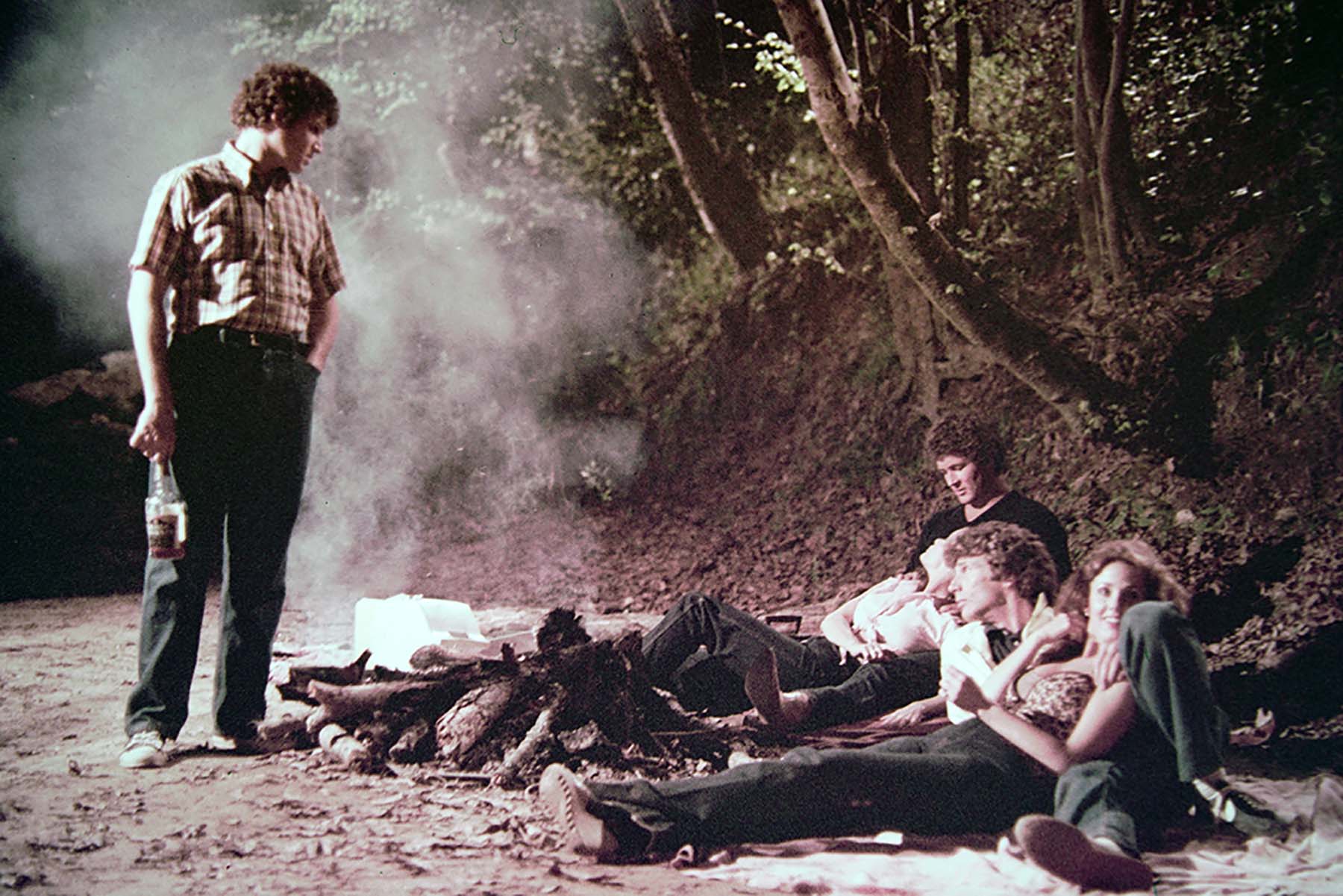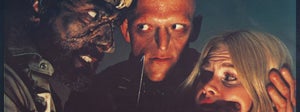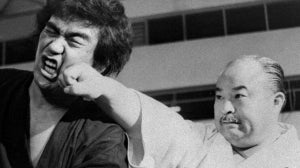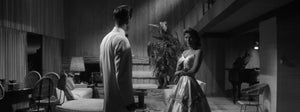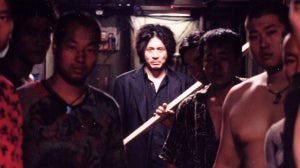
Traditionally, the horror movie has always been the most disreputable of film genres, long decried by the mainstream as childish schlock or quasi-pornographic violence. But there is a certain category of horror film capable of drawing opprobrium from film snobs and die-hard genre fans alike; I refer, of course, to the slasher movie. In his survey of modern horror cinema Nightmare Movies, critic Kim Newman devotes an uncharacteristically bad-tempered chapter to these films, summing them up as “predictable, boring and irritating.” Is he wrong? All genres have their well-worn tropes, but it's certainly true that slasher movies can often be more formulaic than most. After all, how much scope for innovation can there be within a form that demands little more than an escalating series of violent kill scenes and a climactic showdown between the generically mandated final girl and her murderous nemesis?
Nevertheless, a number of films have attempted to play around with these time-worn conventions, or at least throw a few new ingredients into the mix. It's perhaps a mark of the inherent conservatism of the sub-genre that these movies often tend to be amongst the lesser-seen or underrated examples of their kind, but on the occasion of Arrow's release of the 1982 slasher obscurity Death Screams, we thought we'd take a look back at a few other lesser-known slasher titles that dare to be a little different...
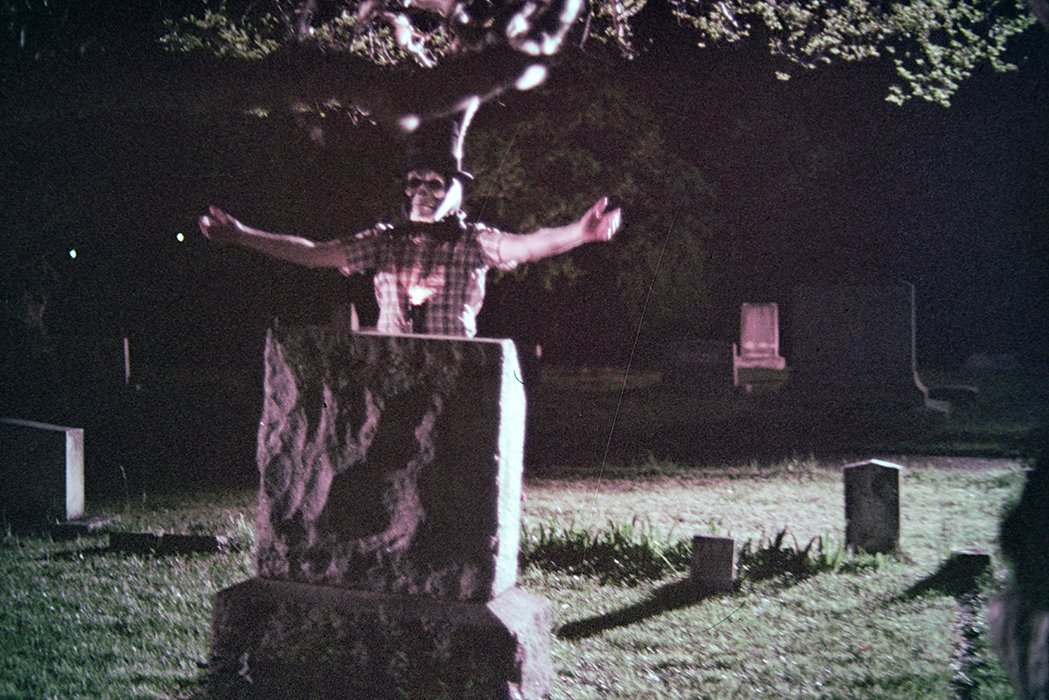
Alice, Sweet Alice (1976)
While the DNA of the slasher movie is inextricably bound up with that of the Italian giallo, the two sub-genres very quickly diverged into two quite culturally distinct forms, each with their own particular set of tropes and conventions. But before the success of Halloween and Friday the 13th spawned legions of imitators, each slavishly copying the apparently can't-lose formula of calendar date + murder set pieces + faceless killer, there was a brief moment where one might have imagined a somewhat different outcome.
If Alfred Sole's proto-slasher Alice, Sweet Alice had been a bigger success in its day, might we have seen a wave of American-styled gialli instead? Films that, rather than blithely adopting the tiresomely reactionary 'have sex and die' metric parroted by so many slashers, dared instead to be a little more perverse, a little more acutely satirical in their social commentary?
Set in a blue collar New Jersey neighbourhood, Sole's film is both a creepily effective forerunner of the slashers to follow and a gritty Scorsesean portrait of the Catholic working class. But, rather than having to try and reconcile their belief in God with the seductive blandishments of the mob, the characters in Alice face something far more terrifying: the spectre of their own faith turned against them, in the figure of an avenging maniac determined to punish them for their perceived sins. A fusion of New Hollywood sensibility and exploitation movie, Alice, Sweet Alice is a probing, queasily upsetting film that has a lot more on its mind beyond which character to kill next, and deserves to have been far more influential than it was.
https://www.youtube.com/watch?v=qU2en24iAIs
Tourist Trap (1979)
In his 1982 survey of all things horror Danse Macabre, Stephen King singles out David Schmoeller's Tourist Trap as an example of the kind of obscure gem genre fans spend their lives trying to seek out, writing that the film “wields an eerie, spooky power.” While I wouldn't disagree with that, and it's certainly the reason the film is included here, I should also note that Tourist Trap is more than a touch slipshod in its construction, wilfully, eccentrically bizarre, and makes very little sense.
An old dark house story of a bunch of not-very-bright young things finding themselves stranded in a run-down waxworks museum, the film is a misshapen hybrid of Psycho and The Texas Chainsaw Massacre...with a touch of Carrie thrown in for good measure. Yes, for reasons never really addressed, the killer in Tourist Trap is telekinetic, which makes hardly any discernible difference to the plot and seems to have been included simply on producer Charles Band's insistence. But, if one can look past the rudimentary displays of telekinetic special effects, a narrative twist a waxwork dummy could see coming, and a repetitive structure that keeps requiring each of the protagonists to escape the museum, only to immediately deliver themselves back into the custody of the one character they might, in all probability, have come to realise they shouldn't trust, Tourist Trap remains worthy of your attention; mostly because it's just so damn odd. As King points out, the film's strength lies almost entirely in its eerie mood; the central waxworks location and the lifeless (or are they?) denizens thereof lending the whole affair a blankly unsettling atmosphere you can never quite shake. (Some credit should undoubtedly go to the film's art director Robert A. Burns, who also worked on The Texas Chainsaw Massacre, another psycho movie which understands the importance of setting.)
Tourist Trap serves to highlight just how few slasher films followed the primary lesson of Carpenter's Halloween: that a pervasive mood and careful directorial craft can trump any number of explicit kill scenes. Schmoeller may not quite be on Carpenter's filmmaking level, but he does at least seem to have understood that much. Tourist Trap is like a bad dream you can't wake up from, all the way through to a particularly nightmarish closing shot. And whoever said nightmares had to make sense?
https://www.youtube.com/watch?v=C_4RQ52c_74
Fade to Black (1980)
Although often classified as a slasher movie, Vernon Zimmerman's Fade to Black is as much character study as horror film, and deliberately eschews several of the more standard tropes common to the form. Still, it's worth highlighting here, not only because it remains frustratingly underseen, but also because it demonstrates that the slasher sub-genre need not have been so hidebound by its own borrowed conventions.
Starring Dennis Christopher as obsessed movie geek Eric Binford, Fade to Black is both a love letter to Hollywood and a knowing look at the dark side of the movies. Bullied by his family and co-workers, a loser in love, Binford leads a lonely, fantasy-tinged existence, until his movie obsession finally spirals down into psychosis and he begins to avenge himself on his tormentors, adopting the guise of various silver screen icons (Cagney, Dracula, the Mummy) as he kills them. Most slashers ask little more from their audience than to vicariously relish the perverse kick of their violence; after all, “it's only a movie”. But Fade to Black asks us to consider whether anything is only a movie, and looks at the ways in which the movies get inside our heads, shaping our ideas and perception of the world.
While the film itself is somewhat uneven, it's worth it for Christopher's unnervingly committed performance alone, which manages the not-inconsiderable trick of being both annoying and affecting at the same time. (There aren't many slasher movies with a psycho you can root for.) Fade to Black is a fascinating look at the underbelly of the Hollywood dream factory, and anyone with a passing familiarity with the sort of fringe-dwellers that commonly populate film festivals and conventions may well recognise what Zimmerman is portraying here. It just goes to show that having brains and a body count are not necessarily mutually incompatible.
https://www.youtube.com/watch?v=oNzuAJ5Q2us
Curtains (1983)
Another oddity. Originally, producer Peter Simpson planned to follow up the success of his 1980 slasher movie Prom Night with a more adult spin on the sub-genre. But a series of on-set disputes between Simpson and the film's director Richard Ciupka led to Ciupka quitting halfway through production. Simpson then proceeded to spend the next couple of years reshaping Curtains entirely; junking much of the previous footage, rewriting the script on the fly, and replacing actors as he saw fit. Under the circumstances, it's a wonder Curtains ended up making any sort of sense at all. Still, it's undeniable that the production joins aren't exactly seamless and the film's logic is, shall we say, often somewhat dreamlike.
The fact that by the time Curtains reaches what appears to be its “final girl” sequence, the heroine in question is a nothing character the film has barely concerned itself with before that moment should serve to give you some idea of how ramshackle the shooting process was. And yet, this does all tend to add to the film's eerie air of schizoid unpredictability. Given that Curtains is, by design, a hall of mirrors story about performance and role-playing that delights in wrong-footing the audience from the off, it isn't too big a leap to accept these gaps in narrative logic as part of the overall plan.
Plus, much like Tourist Trap before it, its attention to mood and atmosphere helps sustain the film through its more awkward passages. Add to this a couple of quietly exemplary performances and some truly dread-inducing set-pieces (watch out for the ice skating scene), and you have a film that by all rights shouldn't work, but weirdly somehow does. Curtains is a downbeat dream of unsettling, inexplicable things; the sort of dream that stays with you long after you've awoken.
https://www.youtube.com/watch?v=sZepnH2UwKM
Intruder (1989)
One of the more conventional slasher movies on this list, Scott Spiegel's Intruder arrived at the very end of the first slasher wave, long after the initial craze had run its course. Perhaps that's why it seems comparatively forgotten these days. But while Intruder is cheap and cheerful and certainly isn't setting out to reinvent the wheel, it's also witty and inventive, and possesses a certain scrappy indie charm that many of the slashers that proceeded it lack almost entirely.
It also makes the most of an interesting setting – an after hours supermarket – which certainly makes a change from the blandly interchangeable holiday camps and sorority houses so endemic to the sub-genre. And while it might have arrived at the end of one particular filmic wave, it does manage to prefigure another. In its depiction of an array of eccentric Generation-X dropouts stuck in a (literal) dead-end job, Intruder anticipates the flood of similar films that would be ushered in the following year by Richard Linklater's Slacker, while also sharing something of the nihilistic punk-rock sensibility of Alex Cox's Repo Man (1984). (It's not a huge stretch to imagine Otto from that film working in Intruder's supermarket, although one can't imagine him being overly concerned when his co-workers start showing up dead.)
Given that slasher movies are almost exclusively concerned with teenagers and young people, it's remarkable how few of them bother to try and reflect that particular demographic with any degree of accuracy or insight whatsoever. So while Intruder certainly doesn't set out to be an anthropological portrait of a generation, it does deserve points for bothering to make its young victims into something resembling actual people. (Oh, and if you really don't care about such things, it's also violently, gleefully gory.)
https://www.youtube.com/watch?v=W_wQdP52Lng
Dream Home (2010)
The success of Wes Craven's meta-slasher Scream quickly brought about a whole new glut of 90s psycho movies. But, in their desperation to emulate that film's pop culture impact, the imitators that followed in its wake learned all the wrong lessons, and what resulted was a series of limply anodyne YA thrillers, lacking anything much in the way of suspense or gore or any discernible interest whatsoever.
It took the unbridled brutality of the New French Extreme cinema of the early 2000s to bring the slasher movie back to basics; films like Switchblade Romance (2003) and Inside (2007) might not have been any more logical or carefully-plotted than your average 80s slasher, but they reinvested the sub-genre with gritty immediacy and wince-inducing violence, and made stuff like Halloween H20 (1998) look like the blandly opportunistic piffle that it was. Following a few years behind them, Pang Ho-cheung's Dream Home wedded their cutting-edge violence to a socially perceptive story of a young woman's ill-fated attempts to climb the property ladder in overcrowded, overpriced, millennial Hong Kong. Eventually driven to insanity by her family's misfortune and the sheer callousness of the modern capitalist system, she resorts to mass-murder as a means of acquiring the perfect place to live.
Both brutally violent and blackly funny, Dream Home shows just what the slasher form can be capable of when utilised by a director with a genuine vision. Its carefully-structured narrative intersperses the succession of gory killings with gradual revelations as to the exact nature of the young woman's plight, and thereby manages to coax the audience into empathising with her mounting sociopathic obsession. So much so that, when we finally reach the film's brilliantly mordant punchline, it feels just as merciless as any of the bloodily explicit murders that have proceeded it.
https://www.youtube.com/watch?v=s0GyWR0XxNo

Related Articles

